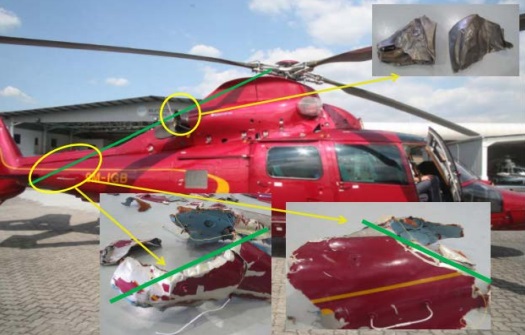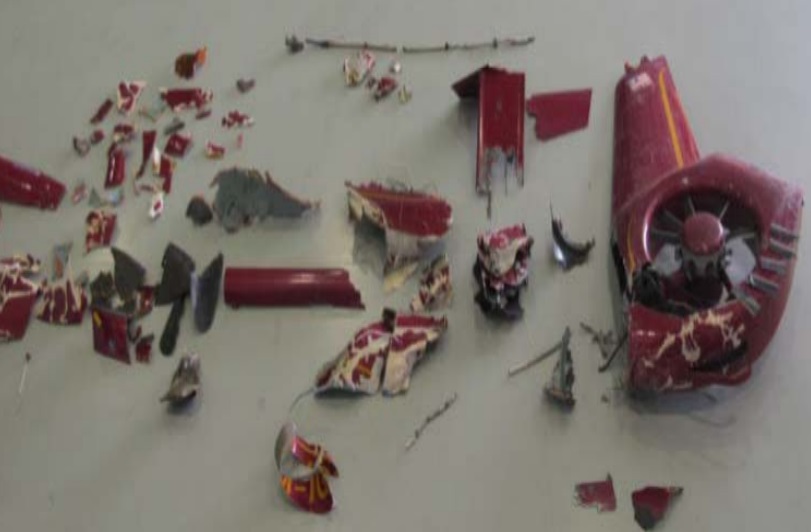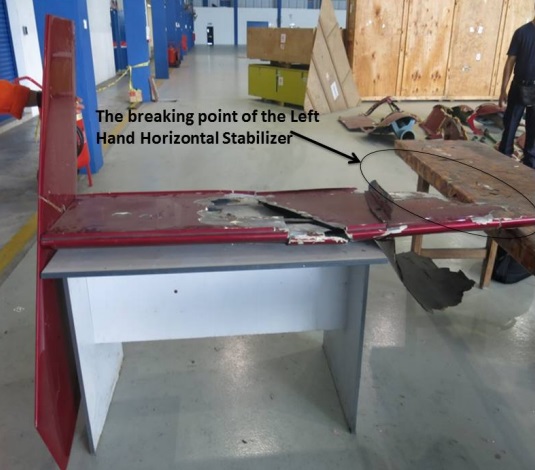Final Report: AS365N3 9M-IGB Fatal Accident
The Malaysian Air Accident Investigation Bureau (AAIB) has issued their final report on the accident to a privately operated Airbus Helicopters AS356N3 Dauphin 9M-IGM on 4 April 2015. The helicopter was carrying VIPs from a wedding luncheon. While in the cruise, the helicopter, with 6 persons on board was seen to dive into the ground. There were no survivors.
The Accident Flight
The aircraft had earlier taken off with 7 persons on board:
The Cockpit Voice Recorder (CVR) information revealed that after getting airborne, one of the passengers was not happy with the weather condition en-route to the destination. On several occasions, he was suggesting to the pilot to proceed direct to Kuala Lumpur.
However, after a short discussion, they concurred to off load one of the passengers originally destined for Bandar Tun Razak, at any open field along the way. While flying along the road en-route to Kuala Lumpur, they spotted a football field and executed an approach for a landing.
The AAIB report that while landing on the football field, the left main landing gear had sunk into the soft ground approximately 50cm.
The helicopter had consequently tilted over 13 degrees to the left. The left hand (LH) horizontal stabiliser vertical fin and the tail section beneath the tail rotor fenestron had contacted the ground causing some damage to the inboard root of the LH horizontal stabiliser.
Investigators also found evidence of a leaked hydraulic fluid on the ground. The AAIB state that:
Shortly afterward, the helicopter was seen to take off to a high hover and repositioned to approximately 10 meters to the front of its last position. One passenger disembarked the helicopter while both engines and the main rotors were still running and he exited via the right door escorted by the pilot. Shortly afterward at 1625 LT, the helicopter took off from the field.
The pilot was seen by a witness to have exited the helicopter and accompanied the disembarked passenger clear of the main rotor area. However, he did not carry out any inspection of the helicopter.
The helicopter was flown wheels down. The CVR recorded the pilot commented to a friend on board:
“we went all the way to the belly, it’s not good”. He further said “it’s definitely not normal for the wheels go down into the ground that far”. It’s definitely not good to tip like that”. He said “as a matter of fact, I saw hydraulic fluid leaking and that’s why I don’t want to put them up”.
The AAIB comment:
The most likely reason to press on for the flight was to accommodate the passenger request to arrive at the destination [Kuala Lumpur] without delay and to enable him to attend the formal dinner as planned.
Analysis of the Flight Data Recorder (FDR) showed:
…the helicopter was flying under auto pilot at 148 kts, the pitch of the helicopter unexpectedly and significantly decreased. The helicopter rapidly went beyond the flight envelop limits without any pilot input.
AAIB explain:
Inspection on the reconstruction of the wreckage revealed that the main rotor blades had struck the cowling, tail boom, fenestron and the left cabin door while the helicopter was still in the air.
This action is considered consequential and there was no indication that the helicopter had struck terrain or any trees in flight prior to the impact. The helicopter decended [sic] almost vertically to the main wreckage area.
The main wreckage was concentrated at one area in a ravine. The 4 main rotor blades were found at different places from the main wreckage. The tail rotor and the right horizontal stabiliser was found about 200 meters away from the main wreckage.
Investigation Conclusions
The AAIB concluded:
The cause of the accident was due to the separation of the left horizontal stabiliser in flight causing the helicopter to dive and bank to the right exceeding its flight envelope.
Right Hand Horizontal Stabiliser AS365N3 9M-IGB Showing were the Left Hand Side had Departed (Credit: AAIB)
The main rotor blades subsequently severed the tail boom and severed parts of the air frame resulting in the accident.
The following factors contributed to the accident:
a) Unplanned landing at an open field causing the left main landing gear to sink into loose soil. The vertical fin attached to the LH horizontal stabiliser contacted the soil and subsequently fracture the inboard root of the LH horizontal stabiliser.
b) Failure of the pilot to conduct detailed damage assessment of the left main landing gear knowing presence of excessive oil leak and damages to other parts of the helicopter.
c) A descending high cruising speed compounded with landing gears down would aerodynamically put excessive loads on the fractured left horizontal stabiliser.
d) Passenger intervention to pilot to return home on several occasions could create peer pressure on the pilot to rush for flying home.
Our Comments
Pressure (real or self-induced) has featured in other past executive helicopter accidents:
- Fatal Helicopter / Crane Collision – London Jan 2013
- Fatal Night-time UK AW139 Accident Highlights Business Aviation Safety Lessons
- UPDATE 18 October 2016: CFIT Gangnam Style – Korean S-76C++
- UPDATE 15 July 2018: HF Lessons from an AS365N3+ Gear Up Landing
BCA discuss some ways to say no.
We have also discussed the heightened risk of last minute changes in plan:
- Beware Last Minute Changes in Plan (EC130B4 in Colorado)
- Fatal Police Helicopter Double Engine Flameout Over City Centre (A109E in Japan)
- ‘Procedural Drift’: Lynx CFIT in Afghanistan
UPDATE 1 December 2016: The European Helicopter Safety Team (EHEST) has issued a video on decision making.
UPDATE 30 December 2016: This was our 3rd most popular article in 2016.
UPDATE 20 April 2017: Taiwan AS365N3 Tail Rotor Pitch Control Loss During Hoisting
UPDATE 28 April 2018: An AW109SP, Overweight VIPs and Crew Stress A heavy landing after a crew were put under considerable stress during a poorly planned VIP flight booking and a hurried overweight take off in the UAE.
UPDATE 1 November 2020: Tragic Texan B206B3 CFIT in Dark Night VMC
UPDATE 2 January 2021: A Short Flight to Disaster: A109 Mountain CFIT in Marginal Weather
UPDATE 11 February 2022: Erratic Flight in Marginal Visibility over New York Ends in Tragedy








Recent Comments